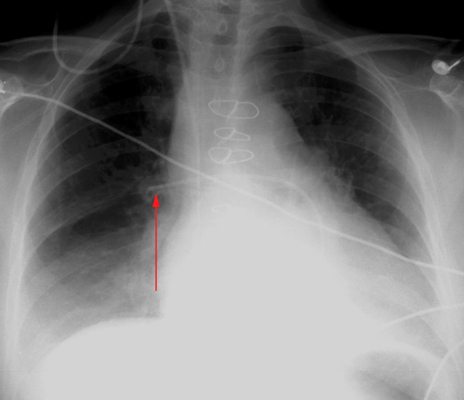ICU Chest Films > Lines and Tubes > Swan-Ganz Catheters > Placement of Pulmonary Capillary Wedge Pressure Monitors
Placement of Pulmonary Capillary Wedge Pressure Monitors
![]()
Swan-Ganz catheters (pulmonary capillary wedge pressure monitors) are used to measure pulmonary wedge pressures. These catheters allow the intensivist to have an accurate measurement of the patient's volume status and can help differentiate between cardiac and non-cardiac pulmonary edema. Pulmonary capillary wedge pressure catheters (PCWP) are introduced percutaneously into the venous system. They are advanced through the right heart and into the pulmonary artery. A balloon at the end of the catheter is then inflated causing the tip of the catheter to be wedged into a branch of the pulmonary artery. The tip is "floated" to a distal pulmonary artery and wedged there. Once the tip is wedged, the balloon should be deflated. Once a reading is obtained, the tip is pulled back to the main pulmonary artery. The catheter tip should ideally be positioned no more distally than the proximal interlobar pulmonary arteries. A good rule of thumb is that the catheter tip should be within the mediastinal shadow. Placement more distally increases the chance of pulmonary infarction or vessel rupture.

Chest x-ray showing location of Swan-Ganz catheter tip (arrow) in the
right pulmonary artery.